This article was reviewed by Steve Snedeker, professional landscaper.
Gardeners old and new have probably heard of thrips and fungus gnats. These insects typically won't cause much damage in small numbers, but as the infestation grows, they can quickly damage your plants. If you're having trouble telling your garden bugs apart, you're in luck. We've researched the differences between thrips and fungus gnats and can tell you how to treat them.
The main difference between thrips and fungus gnats is the areas they infect. Thrips typically only infect outside plants, while fungus gnats are a houseplant issue.
Fungus gnats are harmless and can be controlled with sticky and vinegar traps. Thrips can cause cosmetic damage to plants and spread disease. Gardeners can physically remove thrips, use sticky traps, and attract predatory bugs to control them.
If you're dealing with thrips or fungus gnats, it's important to work quickly to get rid of them, as their small numbers can quickly multiply when the conditions are right. Keep reading to learn more about the differences between thrips and fungus gnats and how to get rid of them for good.
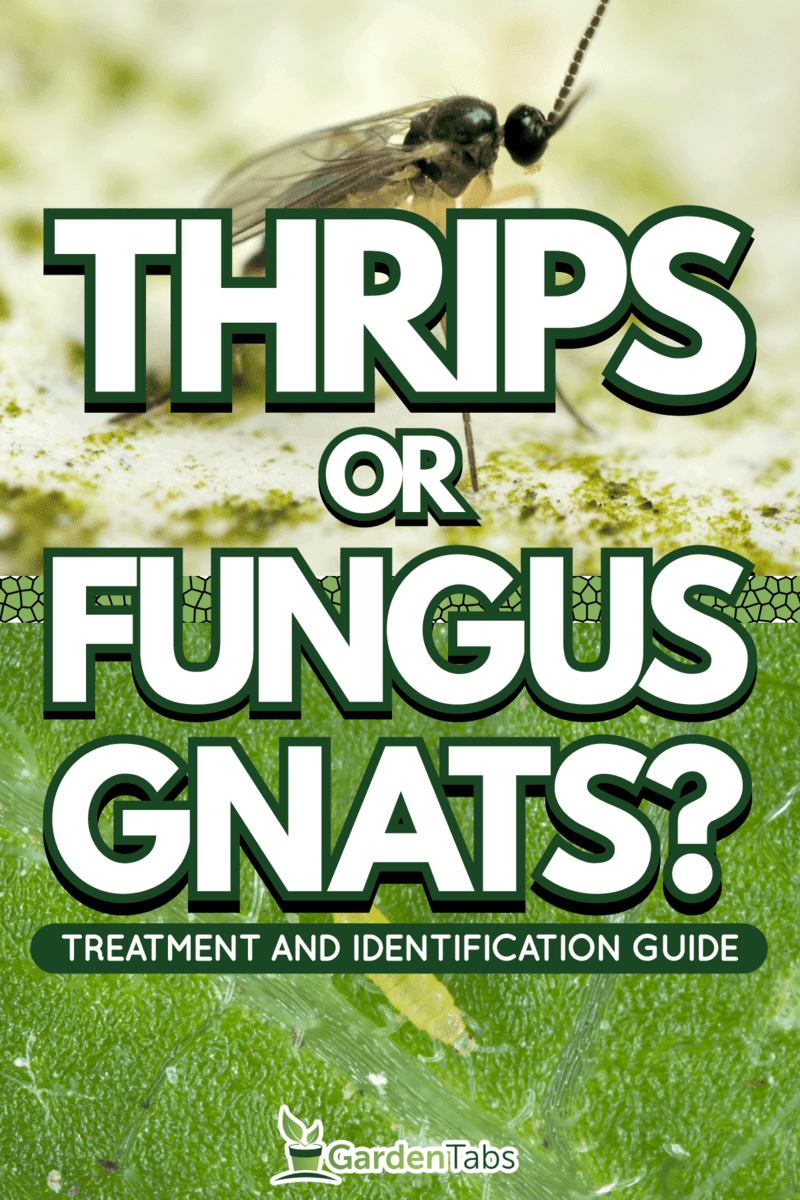
Fungus Gnats
Fungus gnats are tiny, between 2 and 8 millimeters, and live mostly in moist houseplant soil.
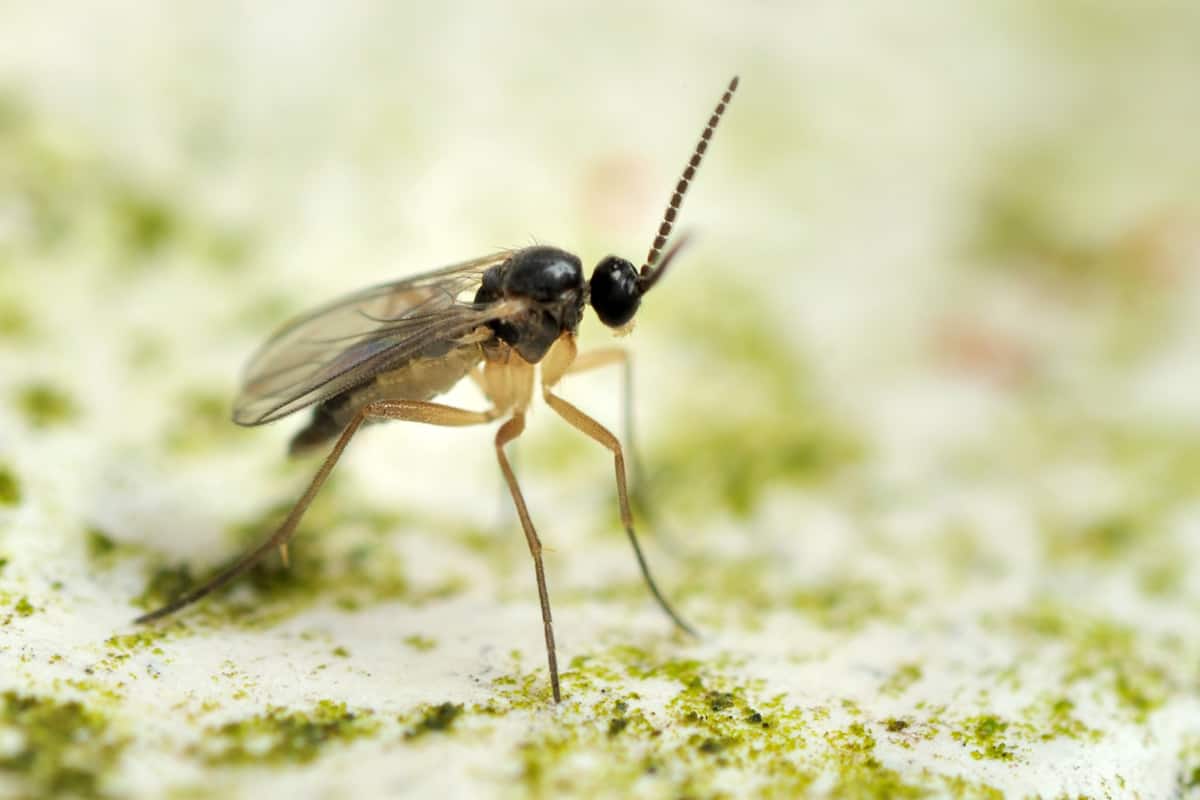
Adult gnats can fly around. However, they have weak wings and typically stay close to houseplants, where they will run across the dirt or leaves.
If any flying happens, it is done slowly and erratically, with most fungus gnats flying into people’s faces or toward light sources.
Damage
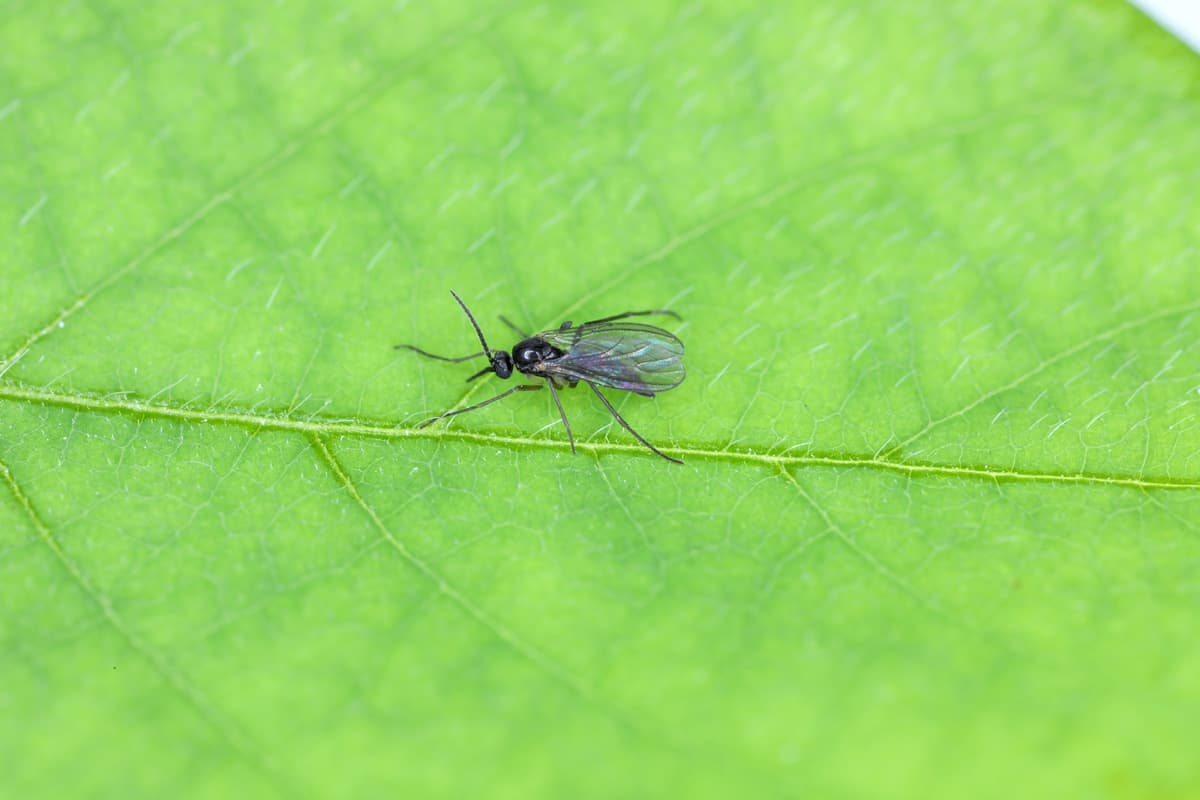
In small numbers, fungus gnats are nothing more than a nuisance. They can’t bite, so they can’t spread diseases to humans. However, these bugs can become dangerous to houseplants in larger numbers.
Fungus gnats are attracted to moisture in potting soil, and adult gnats will lay up to 200 eggs on organic matter on top of the earth. Hatched larvae will burrow deeper into the soil and begin feasting on the organic matter there.
Unfortunately, with such a high population of larvae, there is a big chance that they will also eat your plant’s roots.
Full-grown plants may only show a slight decrease in growth rate or yellowing leaves. Younger plants are particularly susceptible to death. Gardeners should take extra care to protect these plants from larvae damage, primarily because fungus gnat feet transmit the plant parasite known as Pythium.
Getting Rid of Fungus Gnats

Once fungus gnats are present, it can be hard to get rid of them. Adult gnats can be dealt with by placing yellow sticky traps or fly traps close to plants.
Another option is filling dishes with apple cider vinegar and a few drops of dish soap. The bugs will be attracted to the smell but get stuck in the liquid and drown.
These control methods are only effective for dealing with adult gnats. However, the real problem is the gnats' larvae, mainly because they can lay eggs in other containers, infecting them along the way.
Beneficial Nematodes
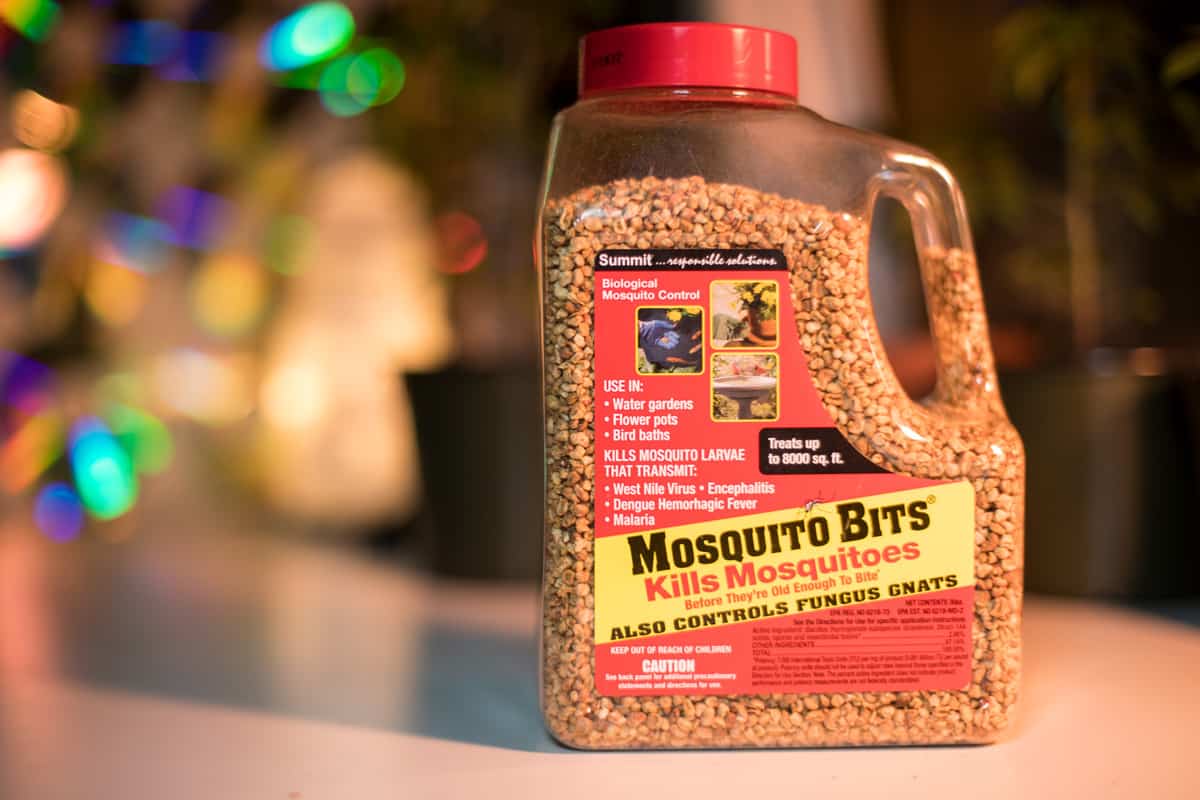
One of the most effective ways to deal with fungus gnat larvae is to apply granules of the naturally occurring bacterium Bacillus thuringiensis israelensisi or BTI. Gardeners can use Mosquito Bits, whose active ingredients include BTI, to control the population of mosquito and fungus gnat larvae.
Gardeners can also create a water soak of BTI by soaking the granules in water, then watering with it. This is also an option for Steinernema Feltiae, which are beneficial nematodes that are advertised as a soil drench.
To use the beneficial nematodes, dissolve the correct amount in water. Then, water your plants and wait for the nematodes to infect the larvae. One benefit of Steinernema Feltiae is that multiple generations can occur after one watering, meaning that even more fungus gnat larvae will be dealt with.
Finally, one of the best ways to prevent fungus gnats is to keep the soil dry. Gardeners should allow at least the first two inches of soil to dry out between waterings.
Covering the earth with a thin layer of sand can also be beneficial. Remember that fungus gnats lay their eggs on top of the moist soil. If there is horticultural sand on top, gnats will be discouraged from putting eggs there.
Thrips

Thrips are tiny pests, usually around a millimeter long, and feed on the tender parts of plants and sometimes pollen.
These bugs emerge from organic matter in the springtime, at which point they will begin laying eggs in plant tissue. Once the eggs hatch, the nymphs will feed on various plants for up to three weeks.
Damage
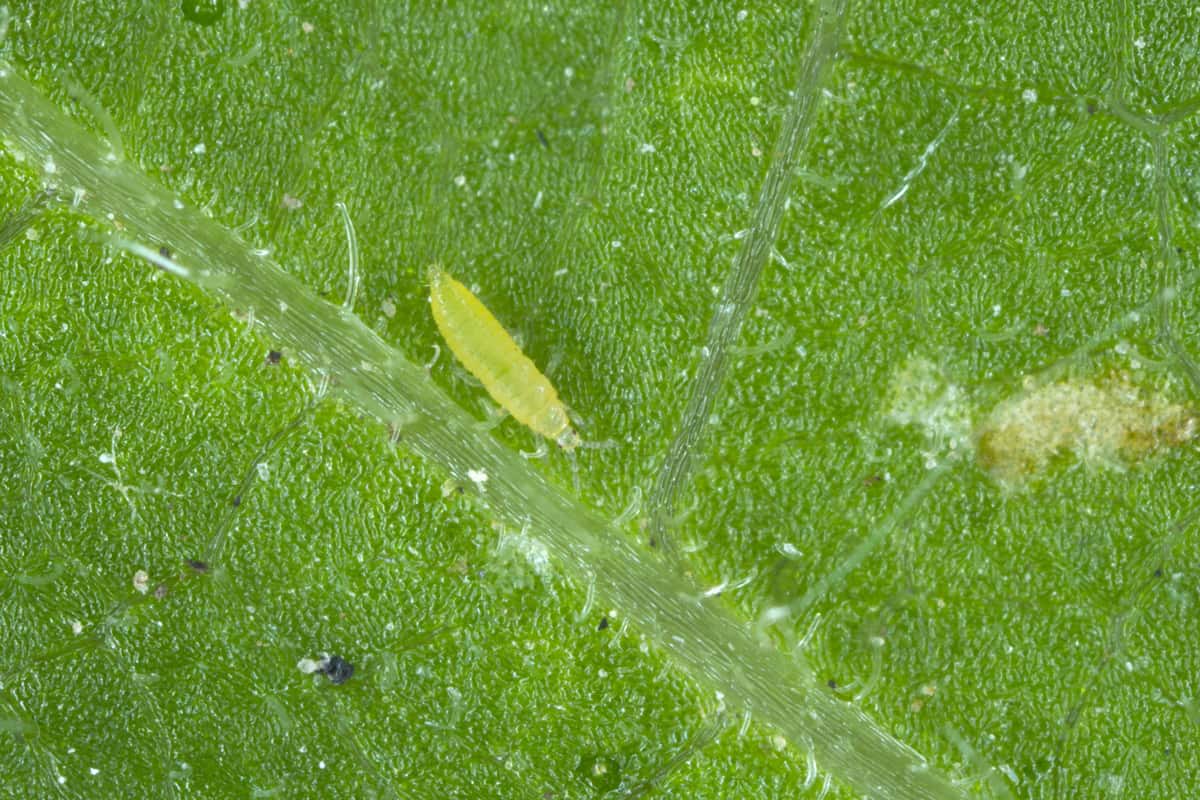
One telltale way of finding thrips in the garden is to look for the damage they cause. If there is a small amount of them, gardeners may see streaks, silver specks, or white patches along their plant’s leaves.
Another sign of thrips is stunted growth and damaged flowers or fruit. Unfortunately, one of the most common ways to find thrips is through a disease outbreak because these tiny bugs can transmit disease from one plant to another.
Unlike fungus gnats, some species of thrips have been known to bite humans. The bites typically don’t do too much damage, aside from some skin irritation, and fungus gnats don’t actively seek out humans to bite because they don’t feed on blood.
Getting Rid of Thrips
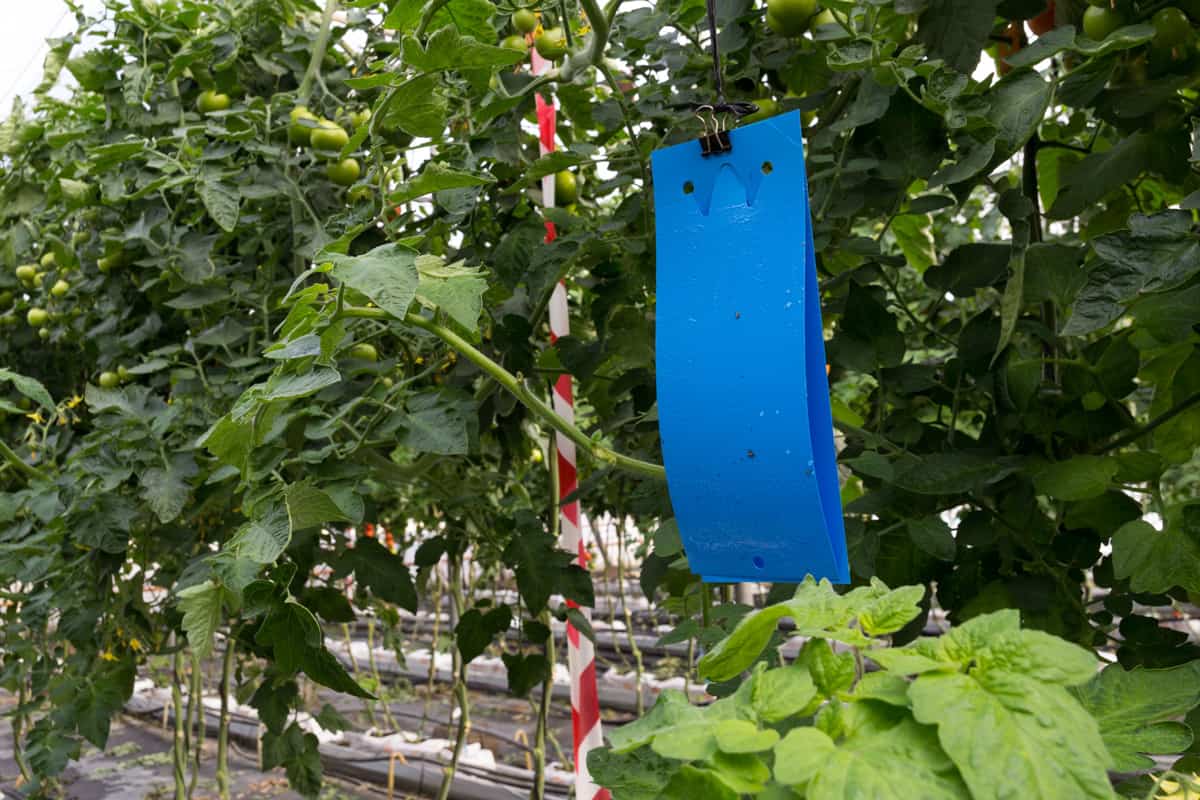
Thrips are another type of garden pest that can be difficult to get rid of. If there are large populations of thrips, it may take patience to get rid of all of them.
One of the first ways to control the thrip population is to control the amount of moisture in the garden. Thrips prefer a dry environment, so keeping plants well irrigated and watered will help keep these insects away.
Another option is to physically remove thrips from plants. This can be done in a couple of ways.
You can spray the plants with a blast of cold water. Use a sprayer on the lightest setting, preferably in mist mode, and wash the underside of the leaves. Unfortunately, this method must be done multiple times a day to be the most effective.
The second method is to place a towel, or something sticky, under infected plants and shake the thrips off. They will fall onto the towel below, at which point the gardener can dispose of them.
Gardeners can also utilize yellow or blue sticky traps to get rid of thrips. The bugs will climb onto the paper, get stuck, and eventually die. This is a less hands-on way to get rid of thrips and may not be as effective if there is a large outbreak of them.
If there is too much damage from thrips, the gardener should prune or remove the infected plant and destroy it. Never compost plants infected by thrips because the adults overwinter in these types of materials.
Predatory Bugs
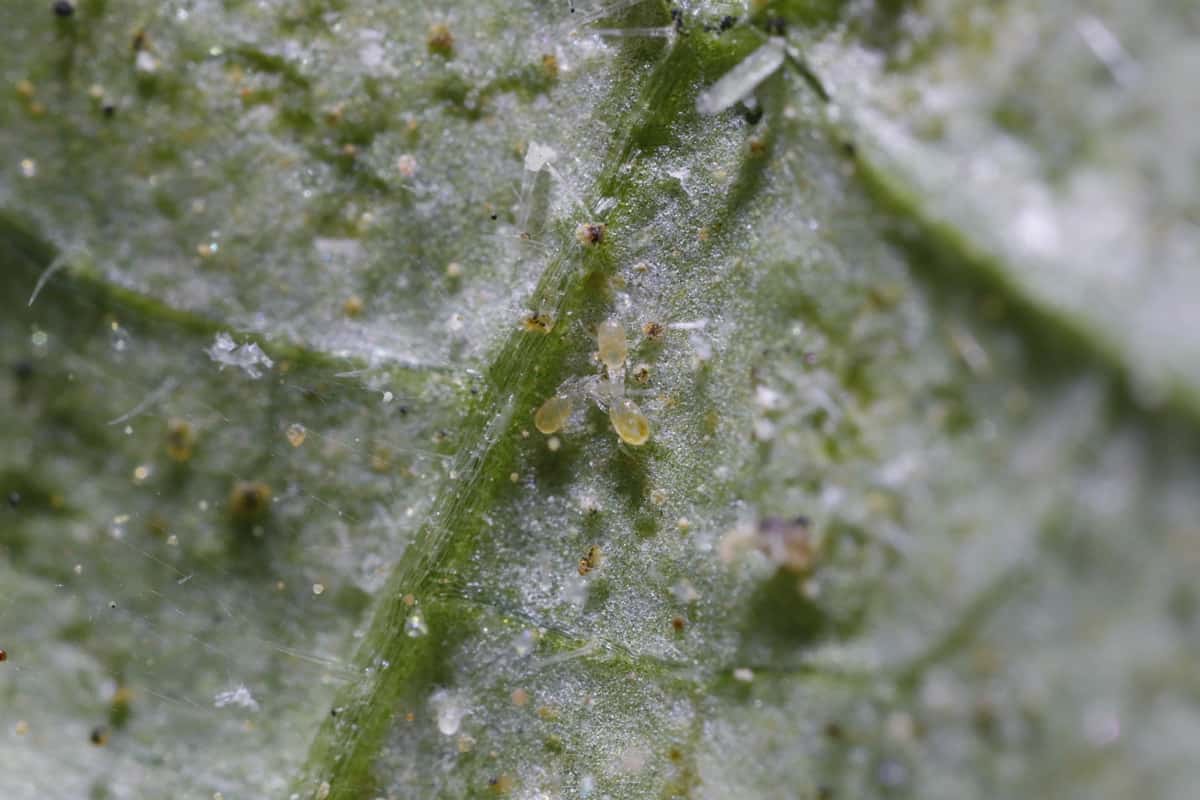
One of the most effective ways to control the thrip population in the garden is to use predatory bugs.
Fortunately, thrips have several natural enemies, including predatory mites, bugs, other thrips, ladybirds, and parasitoid wasps. Out of those, the Amblyseius Cucumeris, a type of predatory mite, is considered the most effective and preferred method of controlling thrips.
Amblyseius cucumeris are usually sold in packets which can be hung close to the infected plants. Once they mature, the mites will search for immature thrips or pollen to feed on.
In Conclusion

Gardeners have to correctly identify and treat the critters they find on their plants, which can be difficult because of their small sizes and similar appearances.
Fungus gnats and thrips don’t have to be the end of your garden. These pesky critters can cause damage in large numbers. However, with some patience, they can be dealt with.
Remember that bugs will be attracted if you recreate their ideal environment, so try to switch up your watering habits if you start seeing more critters. Aside from that, sticky traps and predatory bugs are an excellent way to control pests within the garden.
Don't forget to check out one of the posts below.
